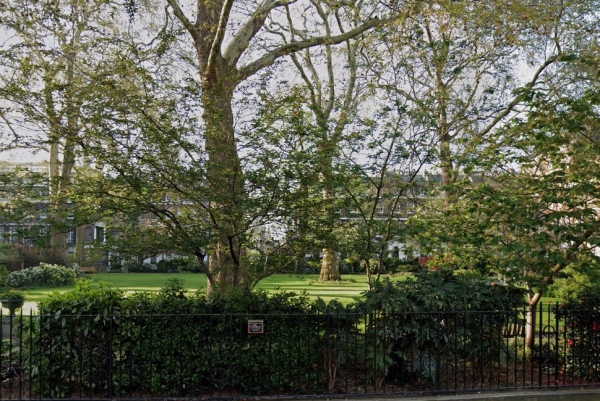This Marylebone square is one of the better preserved Georgian-era squares in London.
Located on the Portman Estate, it was laid out in the 1770s as a residential square with the north side of the square dominated by Manchester House, built in the 1770s as the home of the 4th Duke of Manchester (from whom the house and square, now derive their name).
The house, meanwhile, changed its name when the 2nd Marquess of Hertford took over the lease in 1797. It became known as Hertford House and now houses The Wallace Collection (pictured below), a collection of artworks left to the nation – along with the house – by Lady Wallace, widow of Sir Richard Wallace, illegitimate son of 4th Marquess, in 1897, and opened to the public as a museum in 1900.
The almost circular private gardens in the centre were laid out in the mid-1770s with garden beds and railings (there was apparently a church planned for the centre of the square on which the gardens were located, but it was never built).
During World War II, trenches were dug in the garden and railings removed and the gardens did receive some bomb damage but they were restored in the 1960s and then extensively replanted in the mid-Noughties. The garden (pictured above, looking south) features mature London plane and lime trees.
Famous residents in the square, which has now largely been converted to offices, have included German-born composer Sir Julius Benedict (he lived at number two), surgeon and neurologist John Hughlings Jackson (number three) and colonial administrator Alfred, Lord Milner (number 14) – all of which have English Heritage Blue Plaques on their former properties – as well as Admiral Sir Thomas Foley (number one).
The square, which, along with Portman Square is Grade II-listed, also become briefly famous in around 1815 when it was reported a “pig-faced woman” lived there.
It is also known for being the former site of record label EMI – the cover shot for the Beatles’ first LP, Please Please Me, was shot in the modernist building’s stairwell in 1963 (the building has since been demolished but EMI took part of the staircase with them when they left in 1995).
Interestingly, Manchester Square Fire Station, which was decommissioned in 2005, was actually located a few blocks away in Chiltern Street (it was also known as the Chiltern Firehouse).
PICTURES: Google Maps

